Relocate Ministries: The last hope in achieving equitable growth in Bhutan
Executive summary
Bhutan’s ability to reduce national poverty rate from 12 per cent in 2012 to 8 per cent in 2017 is a reflection of significant progress she has made. Attributable to these achievements, we will be graduating from the list of Least Developed Countries (LDCs) in 2023. During the same period (2012-2017), Dagana’s poverty rate increased, hadn’t reduced, from 25.1 per cent to 33.3 per cent. Bhutan is a Gross National Happiness (GNH) [aspiring] country. Equitable and regionally balanced development is much proclaimed statement. Inequalities in growth among regions and wealth and income disparities among citizens, however, are huge. Some own five-star luxury hotels and can afford high end cars, spending vacation in Bangkok and the like. As the COVID-19 struck us in March 2020 (the first case in the country), 16,884 students who had no access to television nor afford a smartphone (the internet) had to wait until May for Self-Instructional Materials (SIM). Perhaps that could be the primary reason why the current Government’s (Druk Nyamrup Tshogpa) pledge, ‘Narrowing the Gap’ found its place in the electorates’ hearts – on their fingers – hence, the vote. ‘One Nation, One Progress’ is one of the core themes of the 21st Century Economic Roadmap for which consultation is underway.
This opinion piece, interweaving history, socio-economic factors, political landmarks and economic opportunities, proposes, ‘relocating Ministries’ as the last hope in achieving equitable growth. I discuss current approaches of infrastructure development, educational institutions, economic zones and industrial estates and its inherent limits in facilitating ‘equity in growth’. It argues creating market-taking key institutions and people to the grassroots–as the only option left. If implemented, relocating Ministries (central agencies) will not only stimulate economic growth in the local communities but also contribute in cultural preservation and address long-term security in terms of the territorial integrity.
Context: Appreciating progress and acknowledging gaps
Bhutan will graduate from the LDCs in 2023. It is an indication of our success in social sectors and economic development. Over the period of last fifty years, the life expectancy has more than doubled from 32.4 years in 1960 to 70.2 years in 2017. The literacy rate in 2019 stood at 73 per cent attributable to, inter alia, the growth of educational institutes from 11 schools prior to 1961 to 1007 schools and other educational institutes in that period. On the livelihood front, from over 23 per cent in 2007 to 8 per cent in 2017, poverty rate has witnessed major reduction. The micro-level study of different parameters of growth, however, reveals a different story, particularly on the equity front. Bhutan Poverty Analysis Report (PAR) 2017 observed a huge gap between richer and poorer Dzongkhags (districts). For example, Paro’s poverty level was 0.3 per cent percent while Dagana has as high as 33.3 per cent as shown in the figure below.
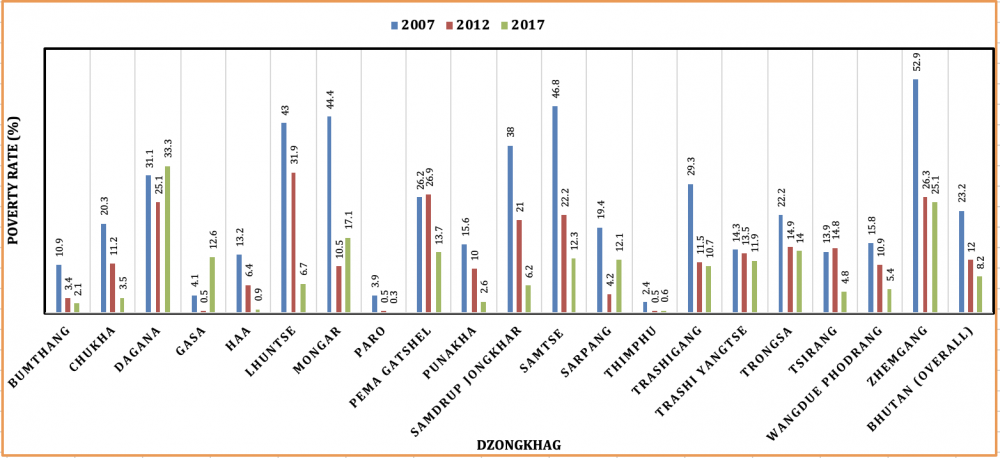 Figure 1: A comparative analysis of poverty rates across twenty Dzongkhags over the period of ten years (2007-2017). Source: Poverty Analysis Reports, National Statistics Bureau.
Figure 1: A comparative analysis of poverty rates across twenty Dzongkhags over the period of ten years (2007-2017). Source: Poverty Analysis Reports, National Statistics Bureau.
At 12 per cent, poverty in Bhutan is essentially a rural phenomenon given urban poverty at 0.8 per cent. The trend was long observed. Mehta (2007) in his study, ‘Inter-Regional Variations in the Inequality and Poverty in Bhutan’ reported, “Even urban-rural differences in the absolute poverty are very high as 38.3% of the rural population lives below poverty line as compared to just 4.2% of the urban population.” A tripartite (ADB, JICA and Australian AID) country diagnostic study, ‘Bhutan: Critical Development Constraints’ 2013 reiterated the World Bank’s 2010 finding, “A large segment of the rural population has limited access to markets and key social services.” If tourism could be qualified as one key market, the sectors is by and large concentrated in the western region as shown in the table below.
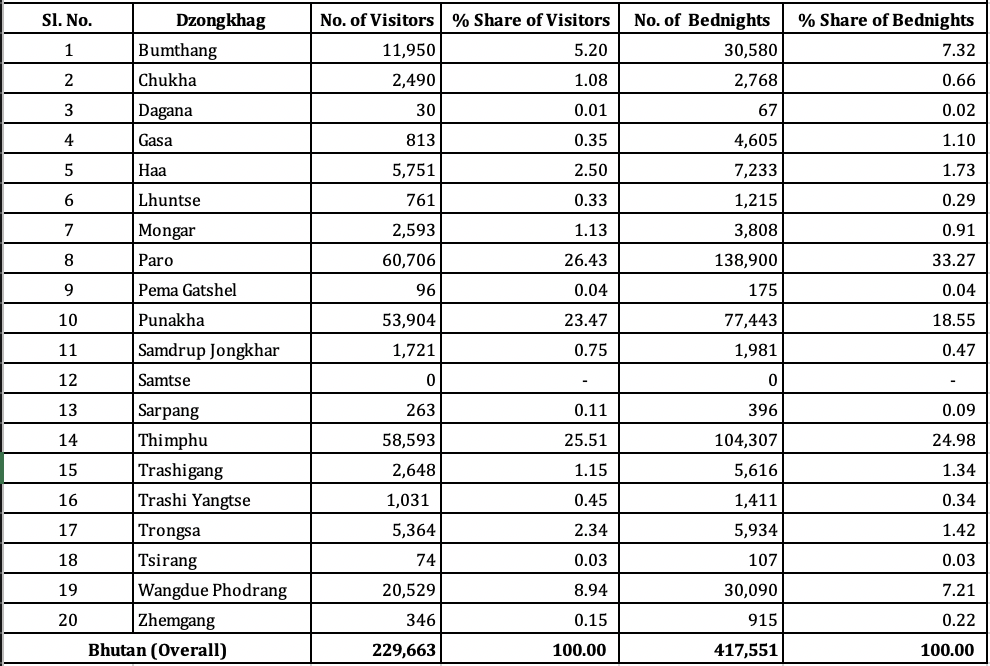 Table 1: Number of tourist (paying) arrivals by Dzongkhag in 2019. Source: Bhutan Tourism Monitor 2019.
Table 1: Number of tourist (paying) arrivals by Dzongkhag in 2019. Source: Bhutan Tourism Monitor 2019.
As we explore and envision the new normal in the midst of COVID-19 pandemic, for optimists, the pandemic gave a hope that we can revisit our focus areas where we did not do good as a country. The Government’s adoption of Economic Contingency Plan (ECP) Series 1 focusing on construction, food security and tourism is one such hope. However, under the ‘Tourism Resilience’ package, from two phases of programmes covering 39 activities (23 activities under Phase I and 16 under Phase 2) worth Nu.232 million, there is no single activity beyond Bumthang’s physical geography (p.20-21). Perhaps Thrumsengla is too tall to climb. Or, is Namling too steep to pass by? It rains where there is water. Perhaps the very water must have caused the water cycle, hence, the reward. One must have noted in the Table 1 above, Samtse, the home to Lhop (popularly known as Doya) community who are regarded as one of the last surviving ancient inhabitants of the country, hadn’t received even a single paying tourist for two consecutive years (2018 and 2019). If not for her distinct culture and pristine environment, tourists might not have come to Bhutan for a drive around Norzin Lam.
These marked disparities encourage people to move to places where there are better livelihood and economic opportunities. The Population and Housing Census of Bhutan (PHCB) 2017 reported that Thimphu, Paro and Chukha saw population gains while Zhemgang, Lhuntse, and Trashigang experienced maximum out migration. As a result of this migratory trend, Thimphu has the highest population density of 19 persons per km2 while Gasa has mere 1.3 persons per km2. If unchecked, by 2047, Thimphu’s population is projected to increase up to 263,000 from the country’s total population of just over 880,000. This will translate into Thimphu becoming a home to some 30 per cent of the population while the Dzongkhags such as Trashigang will be left with negligible 3 per cent as presented in the Figure 2. The six Dzongkhags are chosen considering the maximum gain and maximum loss of population. It is important to remind ourselves that in 1981, Trashigang is reported to have had 160,962 residents while Thimphu had 68,255 residents.
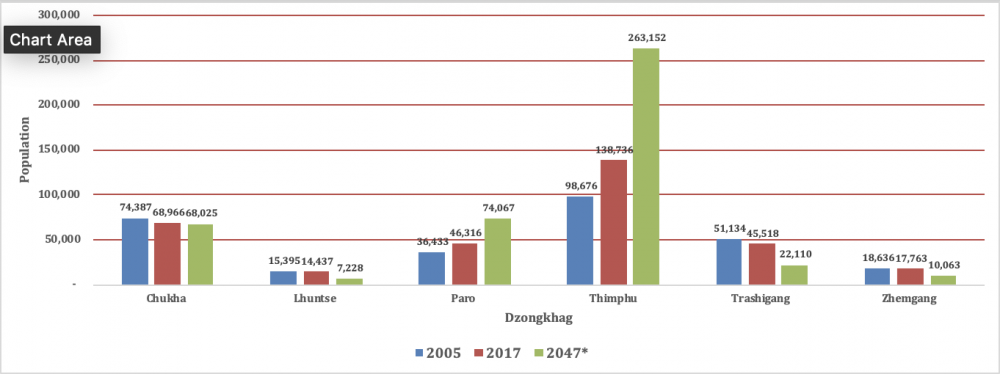 Figure 2: A comparative study of changes in population in six Dzongkhags over the span of two census periods and projected population of 2047. Source: Population and Housing Census of Bhutan Reports, National Statistics Bureau.
Figure 2: A comparative study of changes in population in six Dzongkhags over the span of two census periods and projected population of 2047. Source: Population and Housing Census of Bhutan Reports, National Statistics Bureau.
‘Family move’ at 17.8 per cent, ‘employment’ at 12.7 per cent and ‘education’ at 8.3 per cent were the most cited reasons for move. It is also important to highlight the patterns and trend of migration. It isn’t strictly a rural-urban migration. Out of four Thromdes, Samdrup Jongkhar is in the east and Gelephu in the south. Further, each Dzongkhag has its own urban centre. Current migratory trend, therefore, is more of a regional movement with western Dzongkhags particularly Thimphu and Paro gaining population. From the Figure 2 above, even Chukha would lose population to out migration by 2047. Perhaps, the recent plan to start electrical train between Thimphu and Paro could be in anticipation to address the increasing traffic congestion.
Aspiration: Finding hope in the vision of leaders and legacies of forefathers
Bhutan has never been short of inspiration and guidance. Our Monarchs have left lasting legacies and continue to inspire through Their vision and unparalleled deeds. On the equity front too, one would come across a number of initiatives that have helped in uplifting the lives of those least advantaged. The Fourth Druk Gyalpo, His Majesty Jigme Singye Wangchuck commanded the Planning Commission,
“We should endeavor to work harder for the public welfare and the development activities should be distributed according to the needs of all the villages.” [Issued on this 15th Day of the 7th Month of the Fire Tiger Year corresponding to 27 September 1986.]
Cognisant of undesirable effects of growth such as inequality, the Constitution also incorporated relevant provisions wherein Article 9 Section 7 enshrines,
“The State shall endeavour to develop and execute policies to minimize inequalities of income, concentration of wealth, and promote equitable distribution of public facilities among individuals and people living in different parts of the Kingdom.”
Further, Section 8 under the same article mandates,
“The State shall endeavour to ensure that all the Dzongkhags are treated with equity on the basis of different needs so that the allocation of national resources results in comparable socioeconomic development.”
Complementing these profound constitutional dicta, the Constitution under Article 17, Formation of Government, Section 5 enunciates,
“Not more than two members elected from the electoral constituencies of the same Dzongkhag shall be entitled to be appointed as Ministers.”
This constitutional requirement ensures equity through fair representation in the cabinet taking into account of different regions and ethnicities. Further, it is a proactive constitutional directive to address regionalism and monopolisation of cabinet berth by the Dzongkhag having maximum number of constituencies as espoused by the Chairman of the Constitution Drafting Committee, Lyonpo Sonam Tobgye in his book, ‘Constitution: Principles and Philosophies’. In His Majesty’s capacity as the head of the state, the Fourth Druk Gyalpo, “embarked upon the path of equal treatment by celebrating the National Day in different Dzongkhags” which His Majesty the King continues today.
Conventional approach: Success of current approaches and limits thereof
‘Bhutan is one of the smallest, but fastest growing economies in the world.’ Such testimonials by the World Bank is a sign of Bhutan’s socio-economic progress. These are results of concerted policy interventions in the areas of infrastructure development, social sector, and economic activities and governance reforms such as decentralisation. That said, in the context of growing inequality, these interventions have limits. In the ensuing paragraphs, I discuss some of the existing interventions that are directly related to equitable development.
Developing infrastructure and increasing connectivity: Considering the road as a lifeblood of commerce and growth, road sector received ‘Rs.620 lakhs’ from the total plan outlay of Rs.1747 lakhs in the first Five Year Plan (FYP) (1961-1966). By the end of the plan, 1770 kms or roads including Phuntsholing-Thimphu, Samdrup Jongkhar-Trashigang and Gelephug–Trongsa highways were constructed. Today, villages across the country are connected though farm roads and telecommunication networks and 99 per cent of households are electrified. Yet, people migrate. Assessment of the status of traffic flows among the three foremost highways provide some insights. The traffic flow between Thimphu-Phuntsholing highway is by manifold more than the other two as frequent renovation and widening projects suggest. Shortening the highway indicate how important the route has become in administration, business, transport and the like. In the process, it helped daily wage earners working in the construction sector, vegetable and fruit vendors and businesses including hoteliers. On the other hand, road blocks at Ossey and Box cutting are an annual news. On a normal day, one can hardly find a taxi in Zhemgang town (2017 experience). It can be inferred that Chukha performs better in poverty reduction because its people have market, to work and sell their products. Infrastructure per se may not ensure growth.
Establishing educational institutes: Establishment of educational institutes helps in community development. Roads are built connecting schools with relevant organisations and other schools. Residents gain exposure through interaction and participation in school’s/institute’s fora. It also creates a market for their surplus production. Above all, children get to go to schools. Establishment of educational institutes, therefore, is also considered as an intervention to stimulate local community’s economic growth as Kanglung’s reference as an ‘educational town’ suggest. Sherubtse College started as a public school in 1968, the same year Her Excellency, Indira Gandhi, then the Prime Minister of Republic of India travelled by a vehicle via Phuntsholing to Thimphu. Rice fields in Thimphu gave way to tall concrete structures and the majority of graduates from Sherubtse choose Thimphu as their first place of employment. Perhaps they get to buy things alongside Norzin Lam which they couldn’t afford from M/S Palas and M/S Chador Tshongkhang (shop). Who has the purchasing power? Businesses in Thimphu dare to take risk and invest, because they have continuous inflow of customers and the value of land is high enough to mortgage to avail loan. Kanglung would be much easier than Thimphu if we are to revert both places to 1968 statuses. Ask the generation Y (born in 1990s) who grew up in Thimphu about the growth of Shop No. 7. Sherubtse alumni of 1990s may like to visit Kanglung to assess to what extent the businesses of M/S Palas and M/S Chador Tshongkhang have expanded.
Identifying Economic zones and hubs: Business hubs, economic zones and industrial estates are buzzwords in facilitating business growth. As early as the third FYP (1972-1976), ‘Phuntsholing (40 acres), Gelephug (100 acres) and Samdrup Jongkhar have been identified as industrial estates and work begun.’ Retrospectively, the three towns growth as urban centres must have laid the foundation for present day’s four Thromdes other being the capital city, Thimphu. Such initiatives facilitate economic growth through businesses and private sector development. Emphasizing the importance of regionally balanced development, the seventh FYP (1992-1996) endorsed,
“Industries established in first priority Dzongkhags will be provided with 20% of project costs. Second and third priority Dzongkhags will be given 10% and 5% of the project costs respectively.”
Additional 20 per cent project grant was earmarked for prospective developers in the first priority Dzongkhags where there is no industrial estate (before). Apparently, not much came out from such stimulus package. Businesses need customers and clients. Despite Phuntsholing being the commercial hub of the country, Bank of Bhutan Limited (BoBL) shifted its head office to Thimphu in 2013 supposedly because of missing out on competitive advantage against other commercial banks in the capital. State Trading Corporation of Bhutan Limited (STCBL) also shifted their head office to Thimphu from Phuntsholing as required by Toyota to have visibility. Bondeyma Industrial Estate in Mongar was planned to operationalise in the ninth FYP (2002-2007). Even after paving roads, because of reported lack of developers, a Gyalsung centre is said to be under construction on earlier proposed industrial site.
Introducing administrative reforms/arrangements: People’s participation has been widely acknowledged as the precursor to inclusive growth. Hence, the ‘constant nurturing of democracy’ has been the hallmark of 100 years of Monarchy. Building on the past efforts, 50 per cent of the twelfth FYP (2018-2023) outlay have been allocated to the Local Governments (LG). Such fiscal decentralisation complemented by decision making powers at the LG is expected to promote community participation in developmental activities. One may also like to take a caveat of expertise. In addition, there is a general tendency among political leaders to lump the region as one bloc as tourism promotion initiative ‘Rising East’ indicates. Perhaps the yoke of historical epithet ‘Sharchog Khorlo Tsibgye’ (Eight Spokes of the Wheel of Eastern Bhutan) is too heavy yet precious to deviate from. One may reckon that Sharchog Khorlo Tsibgye has more political dimension than current LG arrangements which as much as political, has socio-economic dimension in it. One apparent concomitant effect of such narrative focusing on a bigger pie, we might miss on other least advantaged regions such as Dagana. As per the PAR 2017 as presented in the Figure 1 above, Dagana’s poverty rate increased from 25.1 per cent in 2012 to 33.3 per cent in 2017. Unless there are computational errors and methodological inconsistencies, it calls for urgent intervention. Bhutan is a small country yet its topography and cultural diversity warrant distinct intervention. It is of interest to note that ‘zonal administration’ and regional planning based on ‘common natural features and geographical proximity’ was implemented in 1989 to facilitate growth capitalising on ‘inter linkages and potentials of the zone as a whole.’ Under the plan, eighteen Dzongkhags were grouped into four zones. Different models have been tried and tested at different times.
The preceding discussions suggest market as prerequisite for economic activities to thrive. Given current migratory trend, abandoned households are mostly like to be the scene in least advantaged Dzongkhags. Is urbanisation a solution then? The ongoing consultation on the 21st Century Economic Roadmap hint that ‘urbanisation’ can be one of the drivers of economic growth and people from Mongar migrating to Thimphu isn’t necessarily bad. It proposes that policies and interventions akin to urban villages will help preserve old age community-based tradition, norms and values. Traditional Village precincts in Thimphu hardly have good experiences to share. Beyond, it has three relevant implications:
First, urbanisation driven growth if unmoderated, deprives one to gain clear understanding of one’s own roots. A youth from Haa in Thimphu find it difficult to get Dzongkha pronunciation and modulation right. Similarly, a young professional who claims to be from Trashigang does not understand certain everyday Tshangla expression. And, local delicacies such as Khuli and Jangbali are rather equated with recent invented high-end cuisine. It is true because we abandoned our lifestyle too fast and embraced certain things without much scrutiny. To this, Karma Phuntsho (PhD) laments that Bhutanese youth are in a cultural limbo wherein they have ‘relinquished the old Bhutanese way of life yet not reaching the new modern lifestyle.’ At the national and big organisations level too, omission will be there as people living in Thimphu may not know culture and tradition of far flung areas. To enable young professionals gain exposure to the challenges facing the rural communities, the Foundational Leadership Programme (FLP) participants of the Royal Institute for Governance and Strategic Studies (RIGSS) undergo a week-long Grass-roots Immersion Programme (GRIP) in one of the remotest villages in the country.
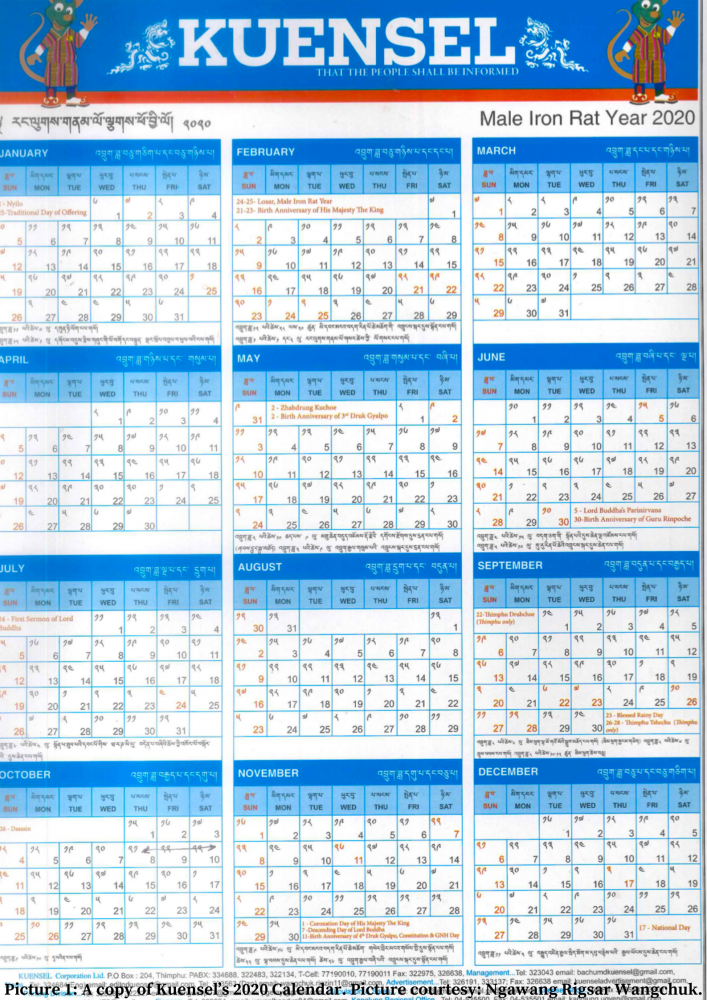
Non-inclusion of Punakha Domchoe and inclusion of Thimphu Tshechu in annual calendars is a case in point. Designer or organisations in Thimphu might not have felt Punakha Domchoe relevant in Thimphu, hence omitted it. Thimphu Tshechu, unless one chooses to watch on television, is not relevant to other Dzongkhags to whom calendars are distributed. Historically and politically, as an independent country, Punakha Domchoe has more relevance than Thimphu Tshechu and including it in the calendar would give a reminder to citizens across the country who have access to one such calendar. As one may note in the Kuensel’s 2020 calendar in the Picture 1 above, Punakha Domchoe which is observed in the first month of the Bhutanese Lunar Calendar annually, hasn’t been marked in the calendar.
One can conclude that one tends to pay more attention to what is closer to you physically to which Daniel Kahneman attributes to a cognitive bias, ‘What You See is All There Is’ (WYSIATI). Recognising such possibility, Local Government Key Result Area (LGKRA) 11 of the twelfth FYP (2018-2023) is on ‘Improved and sustained livelihood of highlanders.’ Livelihood enhancement programme for highlanders is critically important because it gives natives or fellow countrymen of Laya, Merak and Sagteng to continue their stay in that part of the country. This in turn would help preserve our nomadic life and their lifestyle including yak herding which is integral part of the Bhutanese state.
Highlanders’ stories have relevance in Bhutanese narrative. Gon Hobtsho family and Lam Nagseng of Merak, for example, albeit for different reasons. Chogyal Minjur Tenpa deputised by Lam Namse brought Lam Nagseng and Merak under the Drukpa suzerainty helping consolidate the Drukpa reign. To tacitly encourage out migration by identifying urbanisation would have implications in the long term. As the residents of Trashigang town leave for Thimphu, natives of Merak and Sagteng will feel encouraged to follow the suit. These highlanders not only supply us fermented cheese, their roles impinge on our territorial integrity. It is of interest to note that Tashi Namgyal, a shepherd from Ladakh, India first sighted the Pakistani intruders during the Kargil wars [དབྱིན་ལོ་གཉིས་སྟོེང་བཅོ་བརྒྱད་ལུ་ རྒྱལ་ཁབ་ཀྱི་དམག་མི་ བརྒྱད་སྟོེང་ཉི་ཤུ་ལྷག་ཙམ་ཅིག་ལས་མིན་འདུག་ལགས།།].
Pursuit of urbanisation as one of the drivers of economic growth will have to be well thought about. It possibly might have implications on some of the major economic goals of the country such as food security and national self-reliance. The Thromde Act 2007 requires more than 50 per cent of the population to be dependent on non-primary activities for particular area to be classified as an urban centre/throm. It has direct bearings on agriculture (as a primary sector). As authorities and citizens alike try to fulfill the criteria to be qualified as a thromde, fast shrinking arable land will be lost and thus production. Ema Datshi (chilli cheese) is afforded a status of defacto national cuisine. 2015 was not long ago to forget when chillies had to be chartered on a flight from Calcutta. Cannot we build our own economic model based on self-sustaining economy of the past. In a way, it is expected to revive fast losing traditional grains such as wheat, buckwheat, quinoa, etc. When there is market, people work. In the beginning of the current millennium as the Kurichu Hydro Power Plant was being built, farmers of Drepung (Bynangri), Mongar grew crops and walked to Gyalposhing for Sunday market at 01:00. Now with limited number of people (labourers left), even with farm road at their door steps, some do not have adequate crops even for their sustenance. Beyond house hold level, such trend is losing our traditional cereals. What earlier households used to produce has to be today distributed by the state. In light of the foregoing discussion, it is essential to put strategies to keep minimum number of people spread across the country, which apparently is only doable by taking key intuitions and people closer to the community. Only then, equitable and regionally balanced development will be a realistic goal.
Hitherto discussion highlighted possible implications if the existing inequalities and differences are left unchecked. We claim, ‘as a late comer to the modern world, we have opportunity to learn from the past’s mistake (of other countries).’ If our late entry is to put to our advantage, there are abundance of examples related to implications surrounding unchecked growing inequality. Ruchir Sharma in his book, ‘The Rise and Fall of Nations’ discusses the problems of inequalities among cities of different countries. Explaining a phenomenon of ‘missing middle’, he draws a couple of examples. For example, Paris which is home to 30 per cent of the French economy is way ahead than France’s second largest city (economy wise), Lyon (now overtaken by Marseille). Similar comparison has been drawn of Bangkok and Chiang Mai (now leapfrogged by Nonthaburi) in Thailand. Perhaps our plan to develop electric car rail between Thimphu and Paro could be in anticipation of such a growth. While growth in itself is good, the manner and pace it grows when compared to other regions of the country might not stead well with profound vision of ‘equitable and balanced regional development.’ Further, such inequitable growth will become place for not only super rich conglomerate but also for those vagabonds turned criminals who came with a hope of better lives in the city. Living in such a state of affairs would bury the legacy of our forefathers and betray the hopes of the fellow countrymen.
Relocate Ministries: The means to equitable growth
Having discussed all possible alternatives in the context of hitherto interventions and policy programmes, at least the ones that I am informed about, I see one pathway–the only hope-to achieve equitable growth. The hope is in relocating the Ministries. The question arises as to why other agencies cannot be relocated. There are a couple of considerations:
First, Ministries are directly under the executive arm of the government. There is no law (an act of Parliament) which says all ten Ministries should be in the capital. Hence, relocation of Ministries need not have to go through the legislative process. Related to it, as an executive body responsible for implementation of the country’s plan and polices in line with the current needs and long-term goals, relocating Ministries is expected to facilitate development in the host Dzongkhags (similar to Thimphu at present), create market (through transfer of people) and add a pool of human resource at the grassroots. As the table below indicate, from 28,618 civil servants in 2018, nearly one-third of civil servants are under the ten different Ministries. As one may recollect, major reasons for migration were family, employment and education. Transfer of these many civil servants enabled by the relocation of Ministries would be accompanied by movement of their dependents.
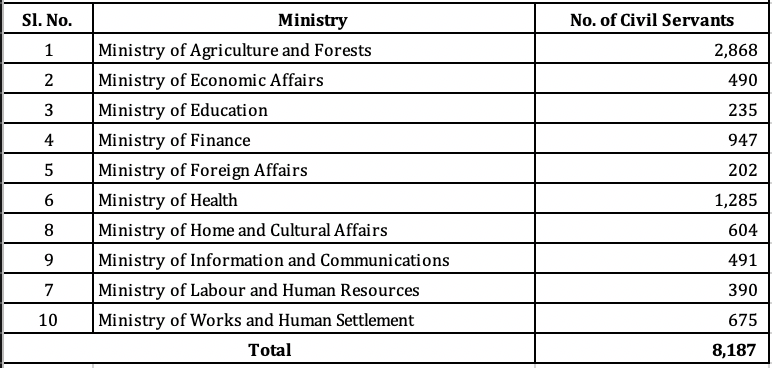 Table 2: Number of civil servants across ten Ministries as of 2018. Source: Statistical Year Book of Bhutan 2019.
Table 2: Number of civil servants across ten Ministries as of 2018. Source: Statistical Year Book of Bhutan 2019.
Second, relocating agencies and corporate bodies will be quite complex. First, besides Constitutional Bodies, there are significant number of autonomous agencies. Executive directive for relocation would not bode well in line with the principle of non-interference and autonomy. Otherwise, concerned agency of its own may initiate such a move which will be commendable. The number of people, however, will be significantly less.
Third, Bhutan follow a mixed-economy in principle. But in practice, it is by and large, a state driven model. In that light, if the Government as primary actor of the state can initiate such change, corporate bodies and private sectors relevant to particular Ministry might follow suit. Observers comment that BoBL shifted its head office because it was losing competitive advantage (against other commercial banks) as Phuntsholing was far away from Thimphu. From that perspective, if Ministry of Agriculture and Forests (MoAF) is relocated to Tsirang, National CSI Development Bank Limited which recently established its head office in Paro (Bondey), the home Dzongkhag of His Excellency the Finance Minister, might also consider shifting to Dagana/Tsirang, for example. It is of relevance to mention that cottage and small industry (CSI) does not confine to agriculture sector.
Premised on the aforementioned arguments, relocation of ten Ministries is proposed taking into account of following considerations [However, standard criteria do not apply across all ten Ministries. It is flexible enough to draw historical importance and rigid enough to stimulate local economy]:
- Drive economic growth in the host and neighbouring Dzongkhags, thus facilitating equitable growth,
- Relive historical and political significance and revitalise socio-economic status of the host Dzongkhag, and
- Follow a principle of ‘geographic proximity’ by relocating all ten Ministries in the ratio of one Ministry for every two Dzongkhags.
In that line, relocation of Ministries is proposed in the Map 1 below. The sequence of discussion on the ten Ministries are in alphabetical order.
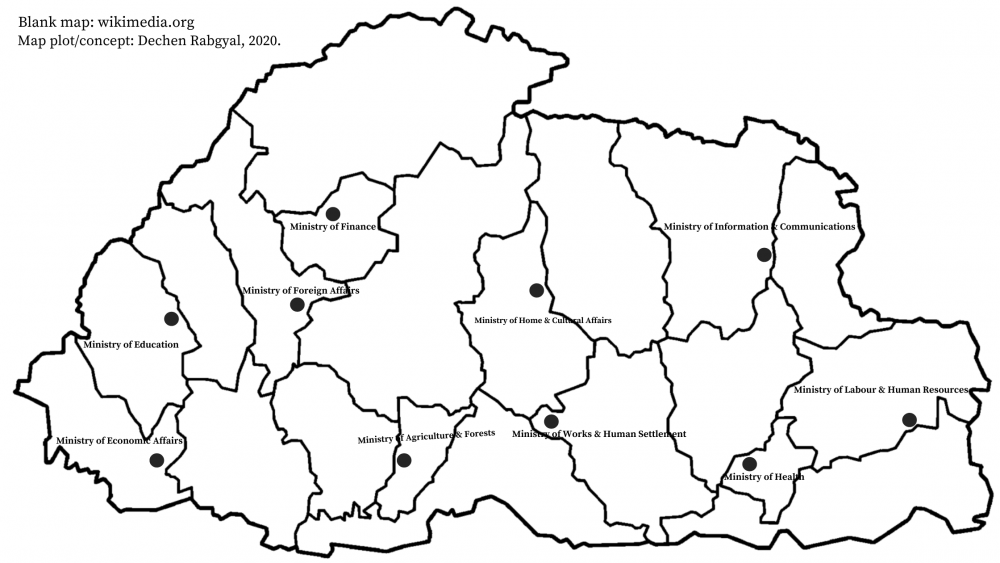
Map 1:Proposed relocation of ten Ministries.
Ministry of Agriculture and Forests (MoAF) [Location: Tsirang [Dagana]]
The Ministry has twin broad mandates to ensure sustainable food and manage natural resources. Tsirang’s temperate climate with high potential for winter vegetable production as identified in the ECP Series-I can model best agriculture practices. On the natural resources front (forests), Dagana home to Phibsu Wildlife Sanctuary which is connected with two other protected areas, Jigme Singye Wangchuck National Park and Royal Manas National Park will provide ideal opportunity to coordinate not only with other protected areas but also with human activity (agriculture). Tsirang’s agricultural productivity and investment in the sector is expected stimulate growth in Dagana. In doing so, a working model in which human live side by side nature, otherwise increasing incidences of human-wildlife conflict, can be modelled. Further, Department of Forests and Park services can be relocated in Dagana similar to that of Department of Air Transport in Paro while its parent Ministry, Ministry of Information and Communications (MoIC) is based in Thimphu.
Ministry of Economic Affairs (MoEA) [Location: Samtse [Chukha]]
As an enabler of growth in material terms, the Ministry focuses on achieving ‘self-reliant economy by promoting environmentally friendly growth.’ It is also mandated to facilitate private sector development. Its proposed location in Samtse would enable interactions with State Mining Corporation Limited (SMCL) and Penden Cement Authority Limited (PCAL) (with years of experience) to facilitate regulatory frameworks for corporate and private sectors as the driver of growth. With Samtse-Chukha highway in operation, College of Science and Technology (CST) can be engaged to explore the potential of how information technology and science can aid in pursuit of economic growth. Such partnership is expected to bring academic closer to practice which in turn would help young graduates understand the real-world situations more.
Ministry of Education (MoE) [Location: Haa [Paro]]
Expected to formulate sound educational policies, the Ministry focuses on improving relevance and sustainability of education. While there are three major categories of education, the Ministry’s responsibilities by and large revolve around modern education. With Ugyen Dorji Higher Secondary School being the first modern school in the country and the two colleges of education either side of the Dzongkhag, Haa is the Ministry’s proposed host Dzongkhag. Once the Samtse-Haa highway opens to traffic, it should enable collaboration and dialogue between teacher trainee colleges of Samtse and Paro and the Ministry to ensure relevance in Bhutan’s education through constant interaction.
Ministry of Finance (MoF) [Location: Punakha [Gasa]]
The Ministry’s overarching mandate is to ensure ‘stable macroeconomic environment through dynamic fiscal policy’. Taxes and revenue streams form critical part of fiscal policy. Right to collect taxes is also equated with ability to exercise authority-right to govern. Records mention people of Chukha presenting coins to Zhabdrung Ngawang Namgyal as early as 1619. In 1680, during the enthronement of Desi Tenzin Rabgye as the fourth Druk Desi, he is said to have received presents of 1000 gold and 1000 silver coins from the Raja of Ladakh, and 700 gold coins and 1000 silver coins from the Raja of Cooch Behar. Later, ‘these presents were distributed to the public, including one silver coin to each family’. This likens to today’s redistributive mandate of the Government ensuring equality. Punakha as the former capital and the seat of Dual system of government where the taxes from other regional lords were sent and presents from neighbouring states received, is proposed location of the Ministry. Further, hydropower potential of Punatsangchu (also ongoing issues surrounding feasibility and debt) including Sunkosh and growing number of hospitality business is expected to bring the Ministry closer to its stakeholders.
Ministry of Foreign Affairs (MoFA) [Location: Thimphu [Wangdue Phodrang]]
At the core of Bhutan’s foreign policy is to ‘promote goodwill and cooperation with nations.’ As Bhutan embraced modernisation, Thimphu as the capital witnessed arrival of regional and global leaders enhancing Bhutan’s profile and credentials as a sovereign Kingdom. Further, it has become a diplomatic jargon to personify the country’s capital. For example, if India makes certain international statement, it is quoted as ‘New Delhi says’. Similar comparisons include, ‘Beijing claims’, ‘Washington denies’ etc. Thimphu too can be personified. In addition, with a couple of embassies established in the country and survey on the 21st Century Economic Roadmap (unpublished) indicating significant preference for multilateralism over bilateralism, Thimphu perhaps can become a ‘Diplomatic Enclave’ gradually. In a way, relocating other ministries creates space for such a future, if we are to pursue one.
Ministry of Health (MoH) [Location: Pema Gatshel [Mongar]]
‘A Nation with the best Health!’ If Bhutan’s effort in the fight against COVID-19 is to indicate anything, it is the reflection of the goal the Ministry has set for the country. Further, the current government came to the power on the promise of overhauling health system including infrastructure and personnel. Enabled by opening of Gyalposhing-Nganglam highway, relocating the Ministry in Pema Gatshel would expedite transfer and distribution of medical supplies to Mongar Regional Referral Hospital which caters to other eastern Dzongkhags. Pema Gatshel referred to as ‘Dungsam Shingdre Khorlo’ which can be loosely translated as ‘Dungsam Spokes of Fruits and Nuts’ indicate the abundance of fruits and healthy dietary habits. It is dietary habits and strong health system including service delivery that will propel the health to the top.
Ministry of Home and Culture Affairs (MoHCA) [Location: Trongsa [Bumthang]]
Chogyal Minjur Tenpa brought Sharchog Khorlo Tsibgye under the Drukpa rule in his capacity as the Trongsa Ponlop. Desi Jigme Namgyel safeguarded Bhutanese’ sovereignty by confronting British in Duar wars in his position as the Trongsa Ponlop. The First Druk Gyalpo, His Majesty Ugyen Wangchuck brought civil to an end in his tenure as Trongsa Ponlop subsequently ascending to the Golden Throne as the first hereditary King of Bhutan, marking era of continued peace and prosperity. Maintaining law and order is one of the main responsibilities of the Ministry because of which Trongsa’s historical role seamlessly fits to the Ministry’s mandate. Associated with it, Trongsa Ta Dzong Museum, its Mon inhabitants in Langhthel and College of Language and Culture Studies (CLCS) at Taktse are reflections of continuity of antiquity as we embrace modernity. Further, Bumthang, the birth place of Bhutan’s cultural hero, Terton Pema Lingpa, sacred temples and plethora of local festivals is expected to promote cultural awareness thus assisting the Ministry based in Trongsa to fulfil its mandate.
Ministry of Information and Communications (MoIC) [Location: Lhuntse [Trashi Yangtse]]
The Ministry aspires to ‘connect the unconnected and establish a harmonious knowledge society.’ Jigme Namgyel’s westward journey to Bumthang from Dungkar, Lhuntse laid the foundation to his rapid rise to the post of Druk Desi. His service at Trongsa and later as Druk Desi paved the way for the First Druk Gyalpo, His Majesty Ugyen Wangchuck to quell internal strife and become the First hereditary King. Since then, peace and harmony thrived and transport and telecommunication services helped connect the regions. However, Lhuntse remains to be one of the least advantaged Dzongkhags. Relocating the Ministry in Lhuntse, therefore is equivalent to expression of gratitude to Jigme Namgyel and his successors for their benevolence and service for the wellbeing of Bhutan and her citizens. Equally, information and multimedia technologies will help record fast disappearing oral traditions in the region. In addition, Trashi Yangtse, which Lhuntse shares the border with, has one of the lowest internet penetrations. Hence, it is expected improve transport and communication systems in that part of the region giving much needed hope for the residents.
Ministry of Labour and Human Resources (MoLHR) [Location: Trashigang [Samdrup Jongkhar]]
Referred to as Trashigang Mi’ Khorlo (Trashigang Spokes of Humans/Personnel), home to Bhutan’s first college in Sherubtse whose graduates have implemented significant plans of modern Bhutan, the College continues to groom some of the brightest graduates in the country. Further, vocational training institute such as Rangjung Technical Training Institute trains Bhutan’s much need labour force in automobile, hardware repairing and furniture. As the Ministry is responsible ‘to facilitate human resource development for economic development and to ensure gainful employment for all Bhutanese workforce,’ its location would give much needed platform to align education and training with workforce needs among the graduates including Jigme Namgyel Engineering College (JNEC) of the neighbouring Samdrup Jongkhar.
Ministry of Works and Human Settlements (MoWHS) [Location: Zhemgang [Sarpang]]
Aspiring to become ‘a leading organisation in the region in infrastructure development for human settlement and transportation,’ the Ministry has overseen major infrastructure development in the country. Traditional architectural designs have given way to concrete buildings. However, Trong Heritage Village is able to withstand the temptation of urbanisation and withstood the test of the time including natural disasters such as earthquake. Further, Monpa communities in Reti, Nabji Korphu, Chungseng, Surey and Berti are living testimony of enduring legacy of human settlement thriving against all odds. On the other hand, Gelephu (Sarpang)–Trongsa highway passing via Zhemgang witnesses major roadblocks during the monsoon every year thus impacting people and commuters. Further, Mao Khoala in Gelephug continues to terrorize neighbourhood residents and travellers requiring close intervention. Will the architects and engineers under the Ministry trained outside see value in certifying the masons who have the skills to build structures similar to that of Trong Heritage Village? Relocating the Ministry in Zhemgang, therefore serves dual mandate – to preserve traditional settlement pattern and structure such as Trong and ensure quality infrastructure development.
Next steps: It is a realistic move
Had other countries initiated such a move? Apparently, no major countries have taken similar approach because of which a phenomenon of ‘missing middle’ as discussed earlier, emerge. That said, there are evidences of countries having two capital cities. The Netherlands capital city is Amsterdam but the parliament and Dutch government are based in the Hague. Similarly, Seoul as the economic and culture centre has long been the official capital of South Korea while Sejong city is the administrative capital. This model based on capital cities may not sync with current proposal to relocate Ministries though the objective would have certain affinity.
Our past has a plethora of lessons. Lhengye Tshog (the State Council), equivalent to today’s cabinet, had three Ponlops of Trongsa, Dagana and Paro and three Dzongpons of Wangdue Phodrang, Thimphu and Punakha besides Druk Desi, Deb Zimpon (Chamberlain) and Zhung Dronyor (Protocol) as its member with Zhung Kalyon as the head. Despite internal differences, during national needs such as Duar wars, these regional leaders came together and safeguarded Bhutan’s independence. Distance didn’t hinder them from discharging national duties. Today, with transport system in place including domestic air services, high level mobility, if essential is manageable. COVID-19 changed the entire dynamics of formal forums and meetings wherein even the United Nations (UN) General Assembly was convened virtually. Hence, information and technology can be leveraged to facilitate such high-level meetings including cabinet meetings. Perhaps Digital Drukyul Flagship Programme can focus in such areas. In a way, it would also reduce our travel expenditure which is one of the highest among recurrent expenditures. If at all the Ministers need to be in the capital, partly attached with the luxury of Ministerial Enclave, we can have Ministerial secretariat in Thimphu with Ministers, Secretaries and a small group of secretarial teams. It is important to note here that even today, not all Departments under the same Ministry is based in the same building. To this end, three specific recommendations are proposed as hereunder:
Infrastructure: A Dzong can house the entire staff of particular Ministry with some retrofitting. Currently, MoHCA and MoF, with exception to some of its Departments, are based in Trashicho Dzong. The transfer of two Ministries would free up the space for MoFA to move in. This has political significance. His Majesty the King as the head of the state needs to be informed of country’s foreign policy. While same must be doing today, shifting the MoFA affairs closer to the Throne Room will present physical affinity between the two.
Flexibility: This proposal based on the principle of ‘geographic proximity’ accommodates flexibility. The physical infrastructure of entire Ministry need not have to be housed in one Dzongkhag. Certain Departments can be located in its neighbouring Dzongkhag. For example, MoAF in Tsirang can have Department of Forests and Park Services in Dagana. In a way, it may provide our policy makers reason to connect Tsirang and Dagana through dedicated highway. Similarly, Department of Culture can be based in Bumthang.
Further research: This opinion piece tried to have as much as data to complement my understanding of the reality. However, policy analyst and leaders might find this proposition short of data to make what appears to be a big move. MoAF and MoEA may need to study how much vegetable growers of Tsirang Toe and Hongtsho earn for a kilogram of broccoli. Isn’t Tsirang Toe farmer working as hard as his/her counterpart in Hongtsho? Similarly, MoIC and the Road Safety and Transport Authority may need to do a comparative study on traffic flow among Phuntsholing-Thimphu, Gelephu-Trongsa and Samdrup Jongkhar-Trashigang highways. Subsequently, MoEA may like to study the number and scale of businesses along these highways. Equally, it will be intriguing for Gross National Happiness Commission (GNHC) and MoF not to study the budget allocated in these highways since its construction in the first FYP taking account of the length of the respective highways. The list isn’t exhaustive. Perhaps that information might help us make decision, objectively, provided we choose to.
As one would have inferred from the title, ‘Relocate Ministries‘, this opinion piece argues that relocating Ministries is the only solution left in our disposal to achieve ‘equitable growth in the country’. Supported by relevant examples, the article discussed why conventional approach of infrastructure development, economic zones and administrative arrangements have become least effective. In relocating Ministries, it is expected to stimulate economic growth in least advantaged Dzongkhags by taking market (people) closer to the grassroots. In a way, it would also encourage autonomous agencies, corporate bodies and private firms who have to rely on these agencies, to move, thus creating economic opportunities in the host Dzongkhags. This article also acknowledges that absolute equality can be one herculean task to accomplish. At the bare minimum, if implemented, it is expected to lift those lowest in the economic ladder of the country to higher level. Beyond this, it will ensure continuity of community based age-old culture and serve our territorial security interests, too.

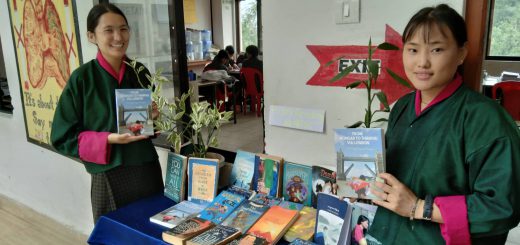
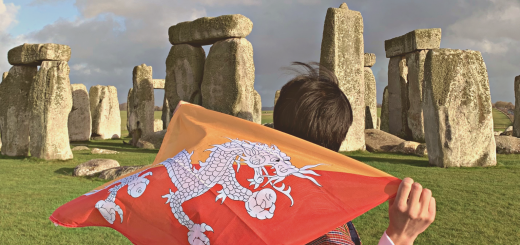
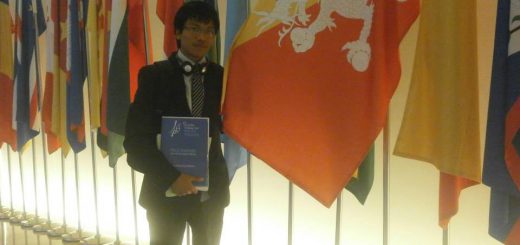
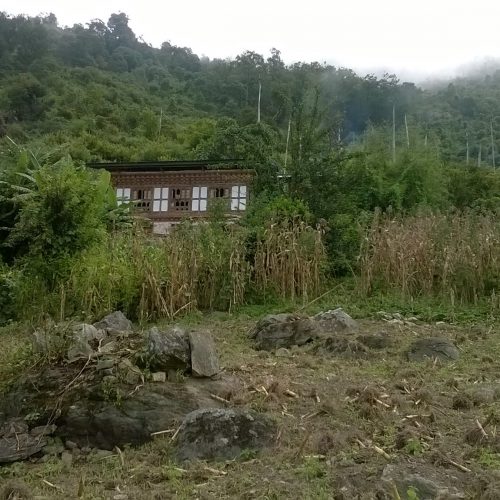
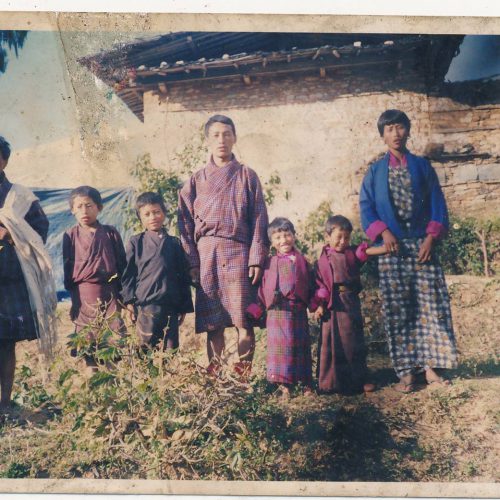
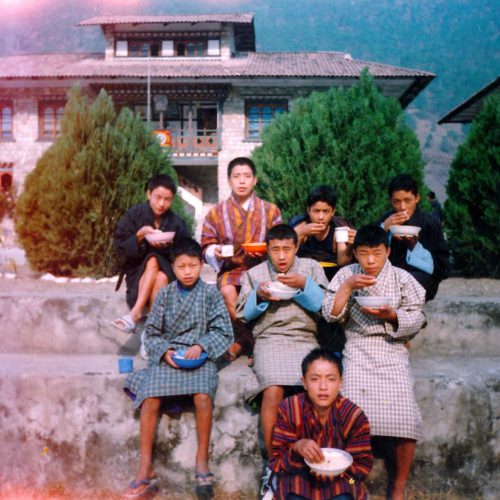
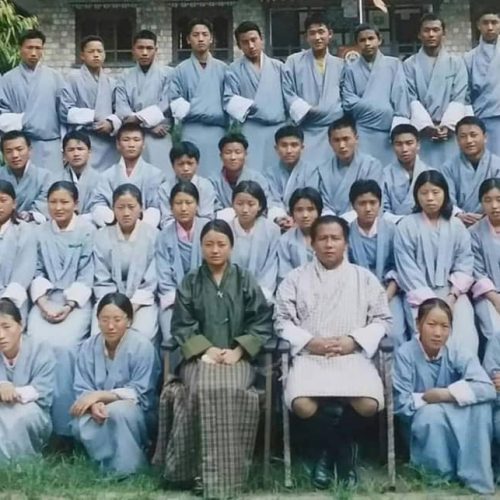
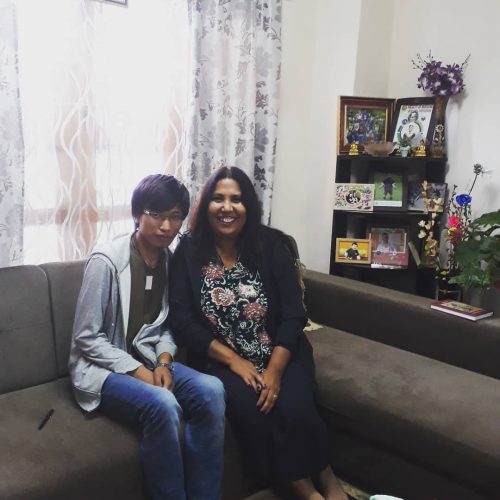
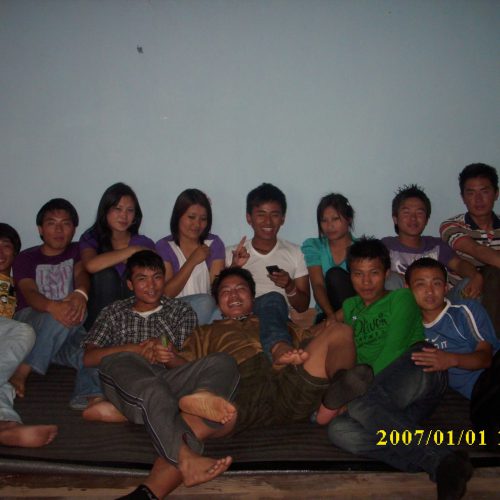
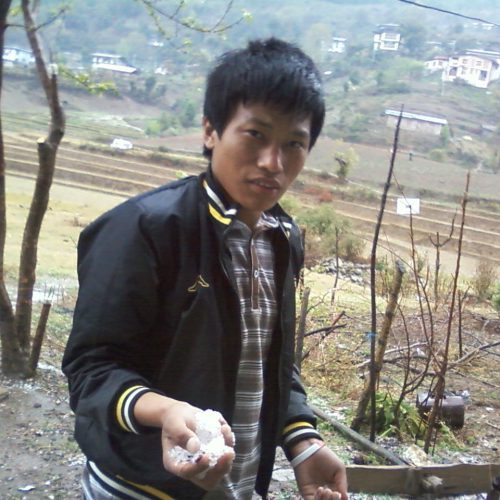
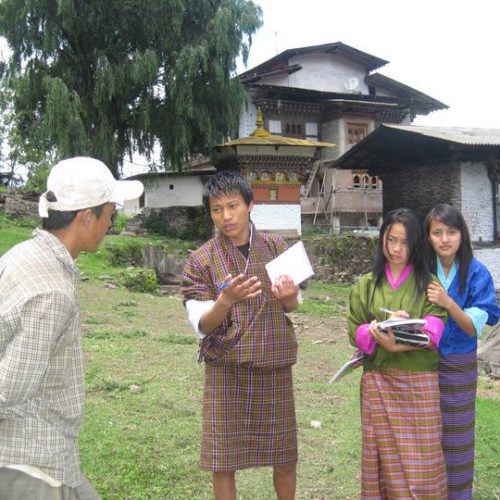
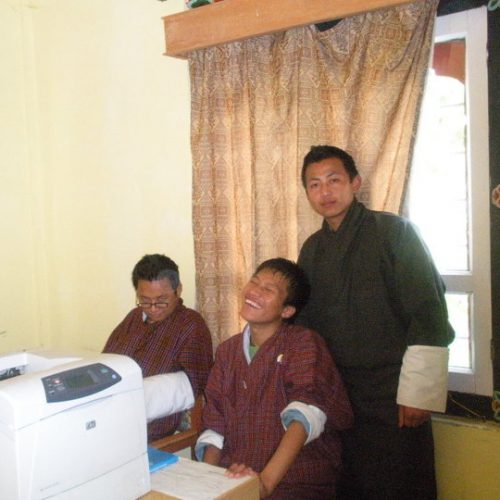
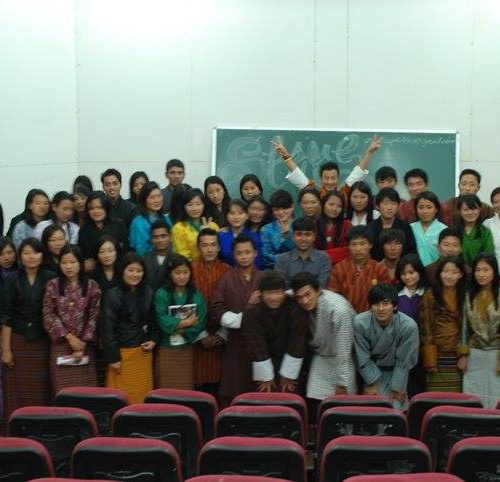
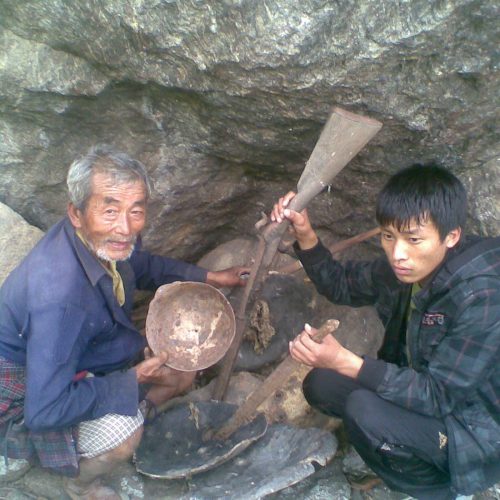
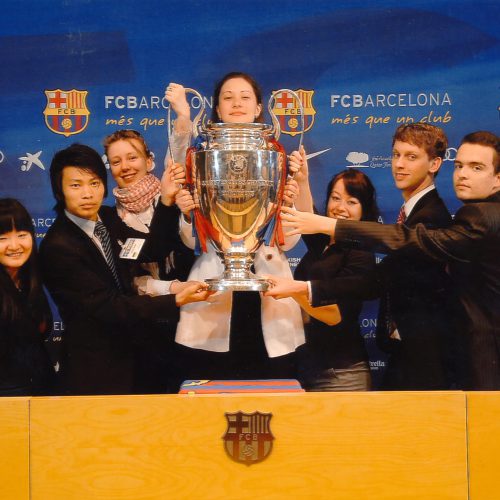

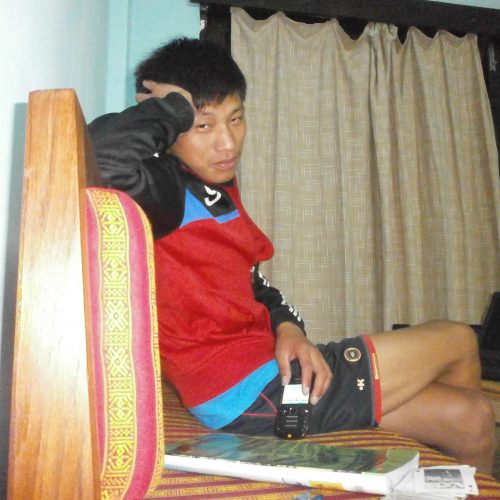
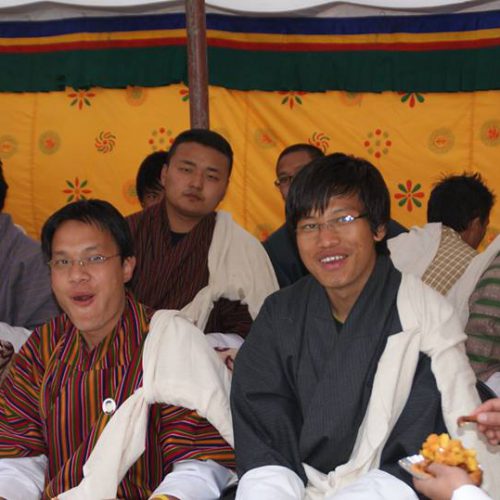
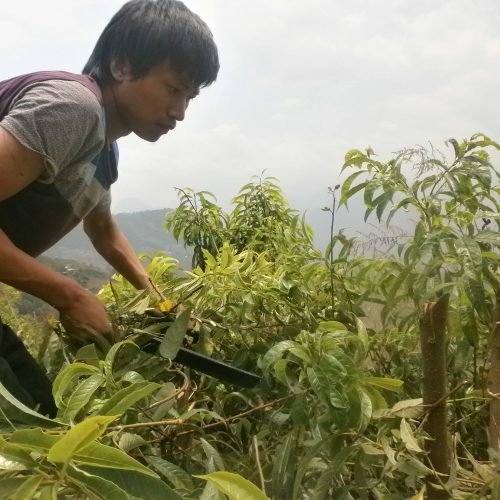
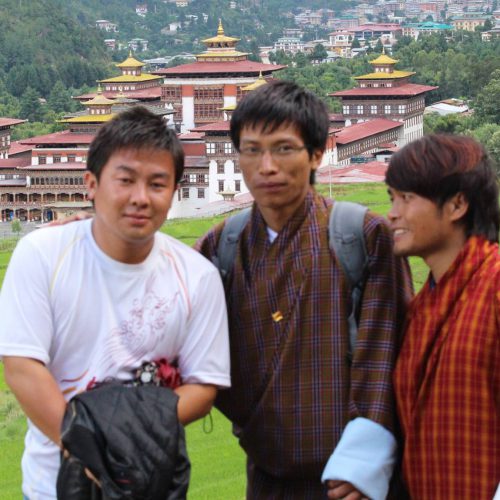
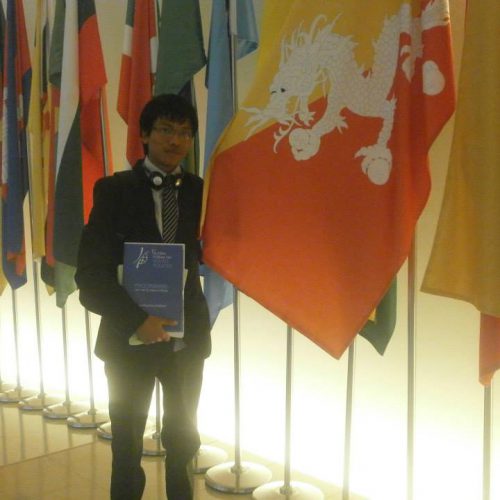
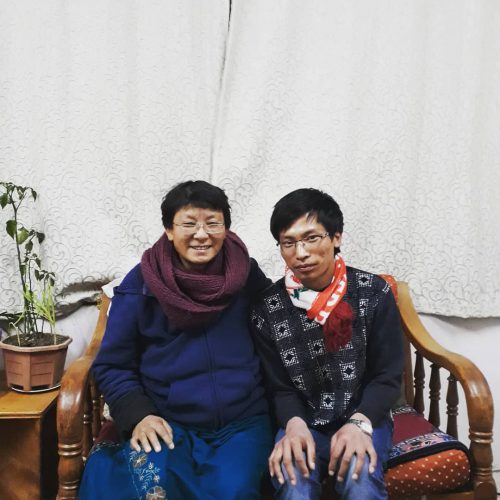
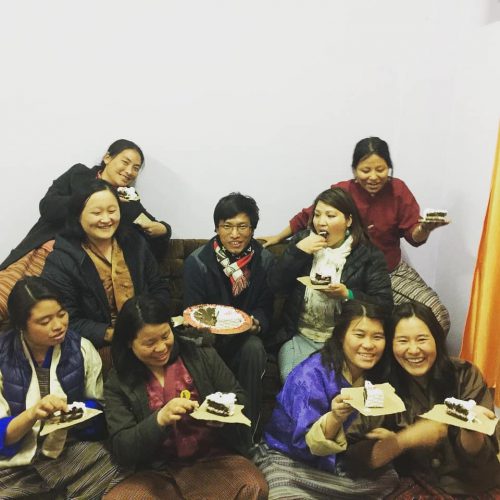
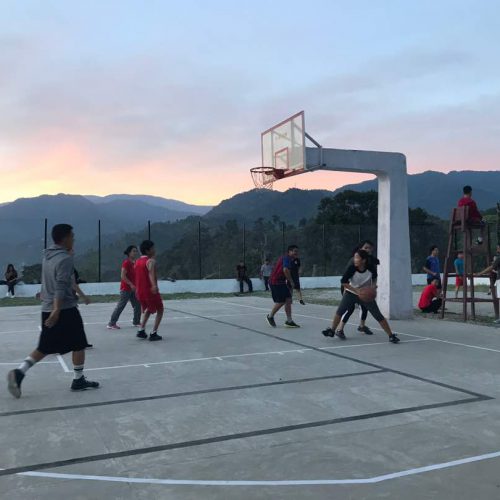
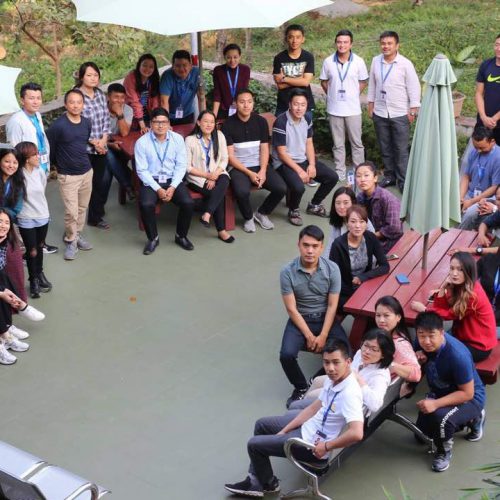
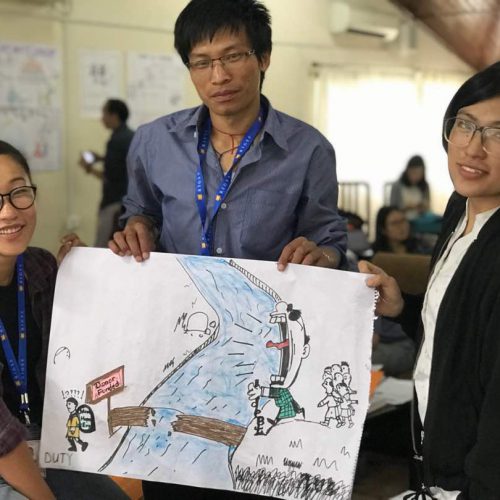
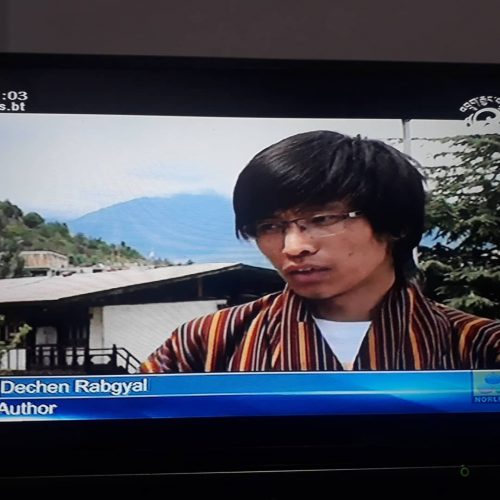
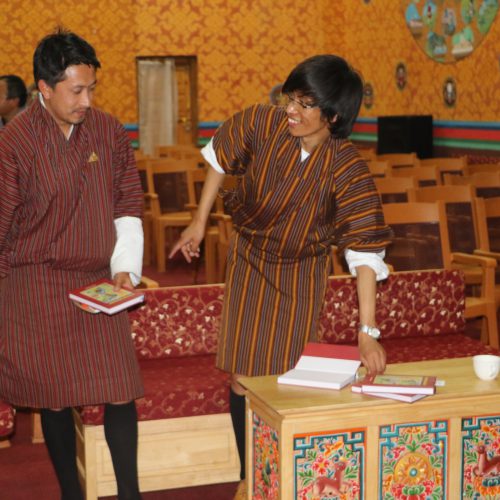
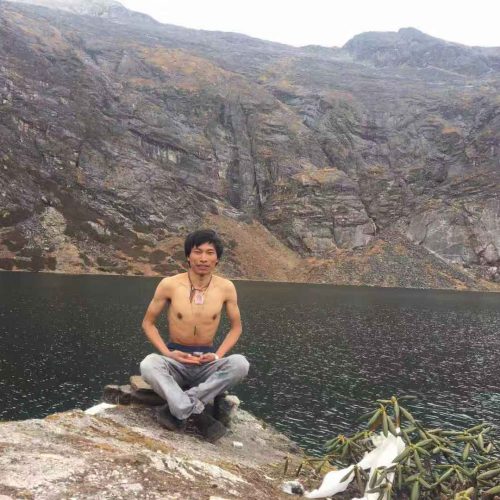
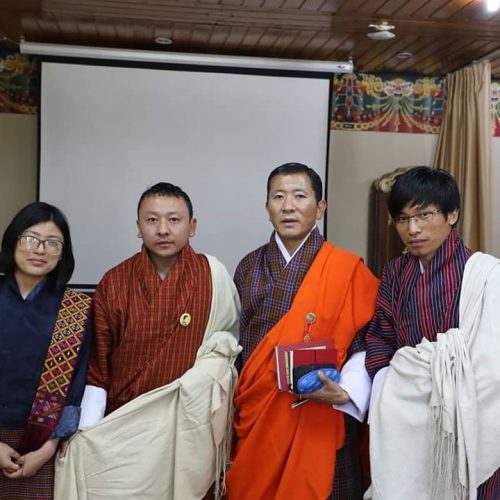
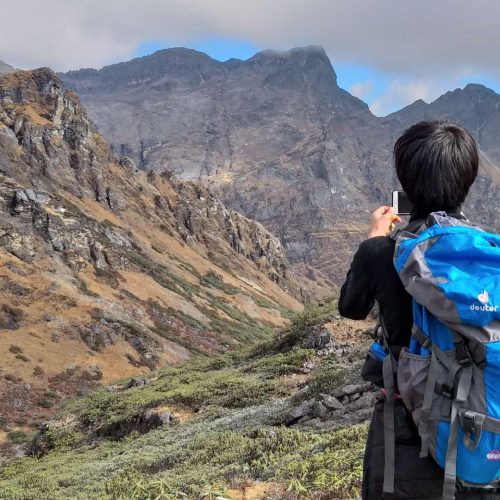
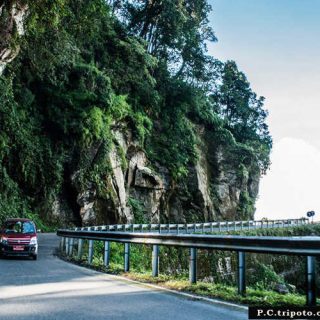
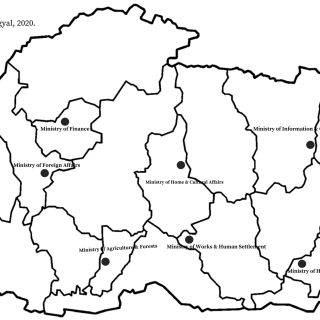
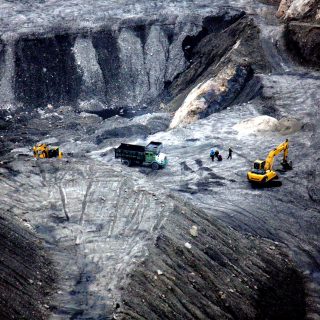
Completely new ideas, a shift from conventional approach of economic development to new approach, thus ensuring equitable socio econmoic development. Meticulously researched findings…enjoyed reading…
What an interesting read , thank you
I hd followed this article from your Facebook status.Now it’s very comprehensive with all the supporting data. Well researched work, Dechen. Highly appreciated and I am also with your opinion of “relocation of ministries”.
Well researched la